What does ‘organic’ hair dye really mean? Is there actually such a thing? This post breaks down the harmful chemicals found in most conventional and organic hair dyes in 2024, and what it actually means when you see the label “organic.”

By: Lisa Fennessy
IN THIS POST:
- My experience
- What’s in hair dye?
- Ingredients to consider
- Is organic hair dye cleaner than conventional hair dye?
- Hair dye alternatives
- Organic hair dye FAQ
My experience
For 18 years, I dyed my hair and in 2016, I was dyeing it as frequently as every. four. weeks. I had been okay with dyeing my hair as my one “cheat.” You know, live healthy, buy organic, clean with vinegar and brush with baking soda…all that jazz, BUT my hair? Oh that’s only once a month and this girl needs her hair did, so it was my one exception.
Then, in January 2016, I ditched the conventional dye to try Hairprint, the cleanest hair dye on the block. I used it for 14 months (read my 7 month and 11 month updates for more) and then decided to GO GRAY. Like, totally gray.
What I found was a generous and welcoming community of women who also wanted to learn how to go gray, and share tips about their experience.
But this post is about organic hair dye, not going gray (even though they’re super related).
RELATED: See my entire going gray journey, including Why I stopped dyeing my hair, 3 months, 8 months and one year of gray growth!

What’s actually in hair dye?
Before I went gray, I set out to find the cleanest hair dye that actually works because commercial hair dyes are so toxic that some people have used them to commit suicide; they’re cheap, fast and deadly.
And those deadly chemicals sit on your scalp for 45 minutes making their way to your bloodstream and making pit stops at all of your organs while you sit and read how J. Law connects to Kevin Bacon through six degrees of separation. Straight up criminal.
Obviously we are not choosing to drink our hair dye, so it can’t be too bad right? Well, let’s start with the scalp. The scalp is one of the most absorbent parts of the body—it’s like a sponge that sops up whatever you put on it. As hair dye sits on your scalp, chemicals are absorbed through your skin and into your bloodstream.
Some of these chemical toxins are peed out, but some remain in the body for months, maybe longer.
So why are companies allowed to put harmful toxic chemicals in a box and encourage people to essentially poison themselves?
The ugly truth is no one is really regulating hair dyes. In 1938, The Food, Drug and Cosmetic Act passed, which put an unregulated cosmetics industry under federal regulation. There were two exceptions to this act: soap and hair dye.
This act has remained pretty much untouched which means no one is running the show and to this day, coal-tar dyes do not require FDA certification. Neither the FDA nor any other entity is telling these companies they are not allowed to use certain chemicals and no one is checking to see what is on shelves to make sure products meet certain standards. Chemicals and formulations are like the typical American criminal—innocent until proven guilty.
The self-regulated industry is compounded by the minuscule amount of scientific-based evidence about the effects of hair dye chemicals in the human body because there’s a virtually endless list of variables. A control group and a test group are impossible to isolate and no studies have lasted through entire lifespans.
It’s like when the tobacco companies “proved” that smoking didn’t cause cancer because they set up a three-month study and at the end of it, the subjects did not have lung cancer. (Eye roll.)
And, even when the FDA tries to step in, this happens:
“In 1979, the FDA tried to insist that hair-dye manufactures place the following label on their products: ‘Warning: Contains an ingredient that can penetrate your skin and has been determined to cause cancer in laboratory animals.’ The ingredient referred to is 4-MMPD, 4-methoxy-m-phenylenediamine, a dye with a structure very similar to PPD that, according to the FDA, showed sufficient scientific evidence of being carcinogenic. Manufacturers disagreed and threatened to sue the FDA if they pressed for the label. The FDA backed down. A few years later, manufacturers removed the carcinogenic compound from their formulas, while maintaining the 4-MMPD was safe.” – The Atlantic Magazine
Toxic hair dyes are happening, the government can’t stop it and consumers are perpetuating it because we keep buying and dyeing. So, since the FDA is putting the onus on the consumer to be informed and follow the directions, let’s dive a little deeper together.
RELATED: The best all-natural purple shampoo for gray hair (and more)

Ingredients to consider when buying organic hair dye
What makes hair dye work and can you really have an ORGANIC hair dye?
It’s all about the active ingredients. There are two heavy hitters to consider when you’re reading hair dye labels (but don’t switch tabs YET, because there are more than two ingredients you need to know):
- PPD is a coal-tar derivative which is allergenic, mutagenic and highly toxic. For 125 years, PPD has been the extent of hair dye technology and beauty manufactures have yet to accept a permanent hair-color formula without PPD…
- …or or its related compound, p-aminophenol. To permanently change the color of hair, a product must be able to penetrate the cuticle to deposit or remove color in the cortex and these chemicals do this.
Bottom line, this means that if your organic hair dye is working, it is employing these toxic chemicals (and therefore is not nontoxic).
Companies who sell “organic” hair dyes do use organic ingredients, but those ingredients are just the extra bells and whistles. The industry calls these “fairy dust” ingredients—they have no impact on color or outcome. They’re used to draw the buyer in and let them believe that the product is safer, when in reality these are all inactive ingredients; the product would perform the same with or without them.
But, there are still more ingredients, which make an appearance in conventional and “organic” hair dyes, that we should put under the microscope:
Resorcinol
Resorcinol is obtained from various resins. Irritating to the skin and mucous membranes. May cause allergic reactions particularly to the skin. The FDA issued a notice in 1992 that resorcinol has not been shown to be safe and effective, and the EU requires a warning label on products containing resorcinol.
Also listed as but not limited to: 1,3-BENZENEDIOL; 1,3BENZENEDIOL; 3-HYDROXYPHENOL; CI DEVELOPER 4; M-DIHYDROXYBENZENE; M-HYDROQUINONE; M-PHENYLENEDIOL; OXIDATION BASE 31; RESORCIN; 1,3-BENZENEDIOL; 1,3-DIHYDROXYBENZENE.
Aminophenol
Derived from phenols. Solutions on the skin have produced restlessness and convulsions in humans as well as skin irritations. May also cause rashes, sensitization and inhalation may cause asthma. Mutagenic in lab tests. Metabolized similarly to Tylenol and can effect the liver. Listed as a 5/6 on EWG’s Skin Deep Database.
Also listed as but not limited to: m-AMINOPHENOL, 3-AMINO- PHENOL; 3-AMINOPHENOL; 3-HYDROXYANILINE; 3-HYDROXYBENZENAMINE; CI 76545; M-HYDROXYAMINOBENZENE; M-HYDROXYPHENYLAMINE; PHENOL, 3-AMINO-; PHENOL, 3AMINO; 3-AMINO-1-HYDROXYBENZENE; 3-AMINOPHENOL; p-AMINOPHENOL, 4-AMINO- PHENOL; 4-AMINO-1-HYDROXYBENZENE; 4-AMINOPHENOL; 4-HYDROXYANILINE; 4-HYDROXYBENZENAMINE; 4-HYDROXYPHENYLAMINE; CI 76550; P-AMINO- PHENOL; PHENOL, 4-AMINO-; PHENOL, 4AMINO; PHENOL, P-AMINO-.
Phenols
A disinfectant and anesthetic for the skin. Ingestion of even a small amount may cause nausea, vomiting and circulatory collapse, paralysis, convulsions, coma and green urine. Death from respiratory failure. Fatalities have been reported from ingestion of as little as 1.5 grams. Fatal poisoning can occur through skin absorption. Scores a 7 on EWG’s Skin Deep Database.
Also listed as but not limited to: BENZENOL; CARBOLIC ACID; HYDROXYBENZENE; LIQUID PHENOL; OXYBENZENE; PHENOL,; PHENYL ALCOHOL; ACIDE CARBOLIQUE (FRENCH) ; BENZENOL; CARBOLIC ACID; CARBOLSAURE (GERMAN).
Phenylenediamine (PPD)
May produce eczema, bronchial asthma, gastritis, skin rash and death. Can cross react with many other chemicals including azo dyes used in temporary color. It has caused cancer in some animal experiments. The FDA tried to ban and require labeling for this ingredient in hair dyes but the industry won out citing the Food, Drug and Cosmetics Act of 1938 exempting hair dye from the FDA’s jurisdiction. Banned from cosmetic use in EU and Canada. Listed as a 7/8 on EWG’s Skin Deep Database.
Also listed as but not limited to: m-PHENYLENEDIAMINE, 1,3-BENZENEDIAMINE; 1,3-DIAMINOBENZENE; 1,3-PHENYLENEDIAMINE; 1,3BENZENEDIAMINE, DIHYDROCHLORIDE; CI 76025; DEVELOPER 11; M-AMINOANILINE; 1,3-BENZENEDIAMINE HYDROCHLORIDE; 1,3-DIAMINOBENZENE DIHYDROCHLORIDE; 1,3-PHENYLENEDIAMINE DIHYDROCHLORIDE; 3-AMINOANILINE DIHYDROCHLORIDE; p-PHENYLENEDIAMINE, 1,4-BENZENEDIAMINE; 1,4-PHENYLENEDIAMINE; 1,4BENZENEDIAMINE; CI 76060; OXIDATION BASE 10; P-AMINOANILINE; P-DIAMINOBENZENE; 1,4-BENZENEDIAMINE (9CI) ; 1,4-DIAMINOBENZENE; 1,4-PHENYLENEDIAMINE; 4-AMINOANILINE.
1-Naphthol
Used as an antiseptic. Causes severe eye and skin irritation. Toxic by ingestion and skin absorption. When applied to the skin in hair dyes, it is not teratogenic or carcinogenic. Listed as a 7/8 on EWG’s Skin Deep Database.
Also listed as but not limited to: 1-HYDROXYNAPHTHALENE; 1-HYDROXYNAPTHALENE; 1-NAPHTHALENOL; 1-NAPHTHYL ALCOHOL; 1NAPHTHALENOL; ALPHA-NAPHTHOL; CI 76605; OXIDATION BASE 33; 1-HYDROXYNAPHTHALENE; 1-NAPHTHALENOL; ALPHA-HYDROXYNAPHTHALENE.
Ethanolamines
Strong bases. Used as a substitute for ammonia. Very large quantities are required for lethal oral doses in mice. Rates a 5/6 on the EWG’s Skin Deep Database.
Also listed as but not limited to: 2-AMINO- ETHANOL; 2-AMINOETHANOL; 2-HYDROXYETHYLAMINE; ETHANOL, 2-AMINO-; ETHANOL, 2AMINO; MEA; MONOETHANOLAMINE; 2-AMINOAETHANOL (GERMAN) ; 2-AMINOETANOLO (ITALIAN) ; 2-AMINOETHANOL (OSHA) ; 2-HYDROXYETHYLAMINE.
Coal Tar
This ingredient causes cancer in animals. Not recommended for use in any product that sits on the skin for over 20 minutes. Contains many constituents including benzene, xylenes, naphthalene, pyridine, quinoline, phenol and creosol. Rates a 10 on EWG’s Skin Deep Database as a known carcinogen.
Also listed as but not limited to: COAL TAR SOLUTION; TAR, COAL; CARBO-CORT; COAL TAR SOLUTION USP; COAL TAR, AEROSOL; CRUDE COAL TAR; ESTAR (SKIN TREATMENT) ; IMPERVOTAR; KC 261; LAVATAR; PICIS CARBONIS.
Also, here is a list of 22 hair dye chemicals banned by the EU:
- 6-Methoxy-2,3-Pyridinediamine and its HCl salt
- 2,3-Naphthalenediol
- 2,4-Diaminodiphenylamine
- 2,6-Bis(2-Hydroxyethoxy)-3,5-Pyridinediamine
- 2-Methoxymethyl-p-Aminophenol
- 4,5-Diamino-1-Methylpyrazole and its HCl salt
- 4,5-Diamino-1-((4-Chlorophenyl)Methyl)-1H-Pyrazole Sulfate
- 4-Chloro-2-Aminophenol
- 4-Hydroxyindole
- 4-Methoxytoluene-2,5-Diamine and its HCl salt
- 5-Amino-4-Fluoro-2-Methylphenol Sulfate
- N,N-Diethyl-m-Aminophenol
- N,N-Dimethyl-2,6-Pyridinediamine and its HCl salt
- N-Cyclopentyl-m-Aminophenol
- N-(2-Methoxyethyl)-p-phenylenediamine and its HCl salt
- 2,4-Diamino-5-methylphenetol and its HCl salt
- 1,7-Naphthalenediol
- 3,4-Diaminobenzoic acid
- 2-Aminomethyl-p-aminophenol and its HCl salt
- Solvent Red 1 (CI 12150)
- Acid Orange 24 (CI 20170)
- Acid Red 73 (CI 27290)
RELATED: What ingredients does TNK always say “no thanks” to? Check these out.
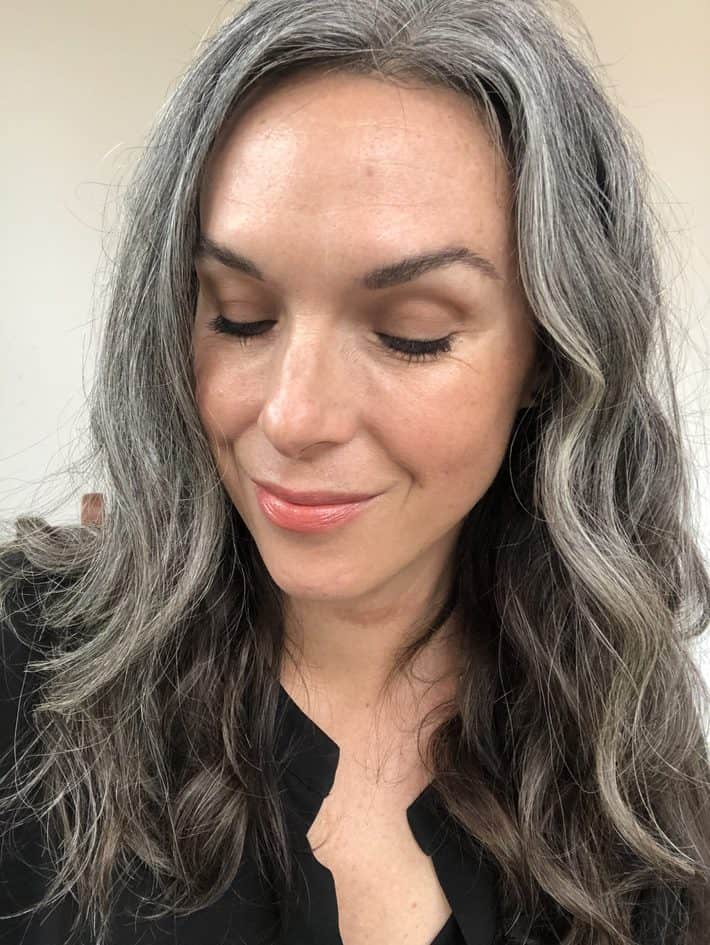
Is “organic” hair dye cleaner than conventional hair dye?
Where do we go from here? First, let me say this is totally an individual decision and everyone has the right to color their hair without being judged. This is a super hard decision to make for some, myself included, because the outcome is so visual. Our goal is for you to be informed of all the information, so you can make the best decision FOR YOU. Full stop.
The tipping point here is education and understanding the difference between marketing lingo vs. what’s actually in products.
It’s what the company is NOT saying—that’s what buyers really need to know.
For example, some companies will boast that their product is “ammonia free” or “PPD free.” First of all, ammonia is an archaic ingredient. It is still used, but it’s not a staple ingredient like it used to be. Parallel to buying chicken, when the label says “hormone free”—hormones are not used in chicken anyway.
It’s like saying there is no steak in your ice cream…yeah we know!
So, what are they using to replace ammonia? Is it ingredients like ethanolamine and triethanolamine? And are they also using chemicals like PTD (para-toluene diamine) or p-aminophenol as a substitute for PPD? If the answers are yes and yes, these formulas could be just as questionable as “conventional” hair dyes.
“It’s probably true that if these materials (PPD and PTD) were invented today, their use in cosmetics would not be permitted but they remain in use…as no effective replacements have been found.”
Royal Society of Chemistry
I’m not here to convince you to dye your hair or not. That’s is 100% up to you and to feel good about it either way. The one point that I really want to drive home here is when a hair dye is labeled “organic” or claims to be “natural,” don’t be fooled into thinking you are getting a “healthy” alternative. I hear so many people say, “I know it’s not perfect, but at least it is a little better.”
It’s not really. It’s all the same active ingredients, just boxed and labeled differently.
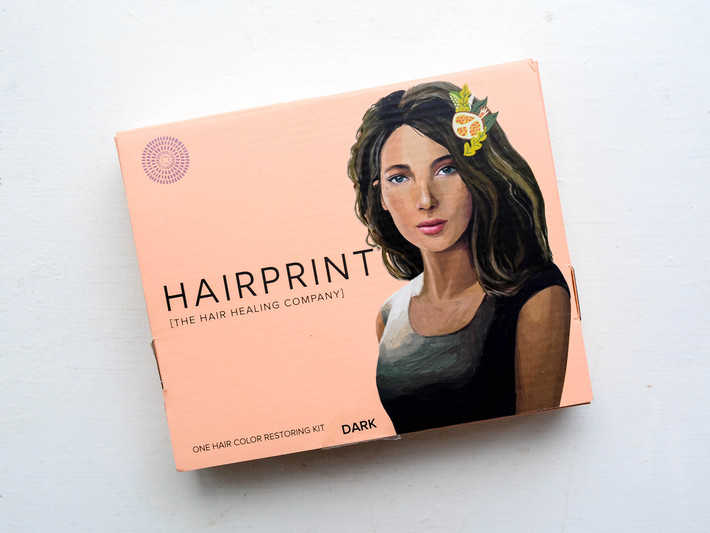
Other hair dye alternatives
What are some other options? Well there are a couple. Supplements, henna and HairPrint, to name a few.
I’m usually game for trying organics and natural alternatives, but the more I looked into henna, the more I was seeing things like, leave it on for 4-5 hours or OVERNIGHT (the ingredients look fabulous but lets be honest, overnight?! No thanks). Many reviewers said the color outcome was unpredictable and it didn’t last. Ruth Winter, author of A Consumers Dictionary of Cosmetic Ingredients says, “They are more difficult to apply, less reliable than manufactured dyes, and less predictable as far as color is concerned.” The reason for this is henna dyes only coat the hair temporarily; they don’t alter the hair like permanent dyes.
Or maybe supplements? Some of my readers mentioned diatomaceous earth, Brahmi Amla or another herbal remedy like He Shou Wu. While these may work, I’m personally a fan of less when it comes to supplements. I am a fan of instant gratification, though my going gray journey was NOT instantaneous (still, so worth it).
HairPrint was the closest I came to finding the golden ticket of organic hair dye. And even after that great experience, I chose to embrace my gray.
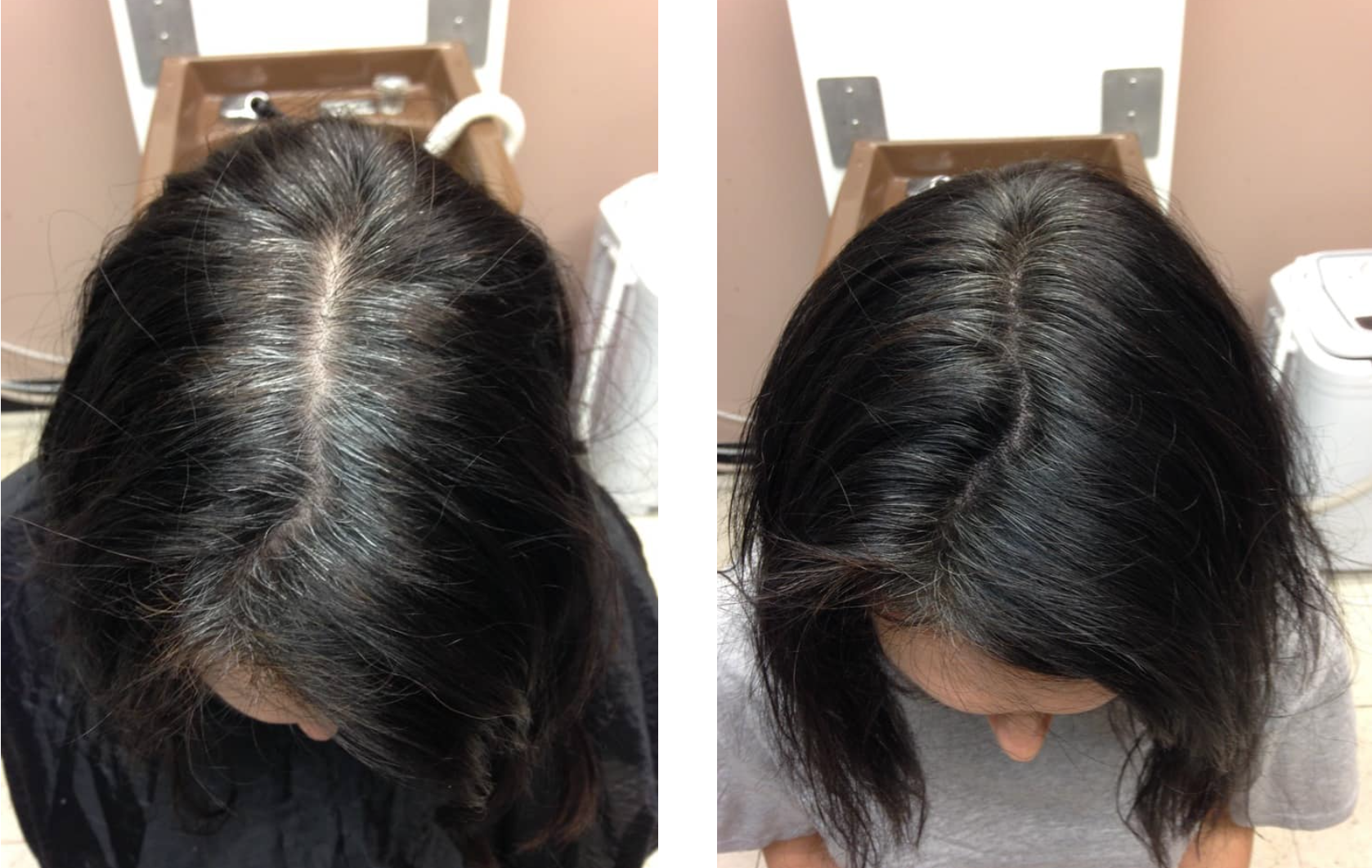
Organic hair dye FAQ
It’s not really. It’s all the same active ingredients as conventional dye, just boxed and labeled differently. Read my full study on organic hair dyes here.
HairPrint was the closest I came to finding the golden ticket of organic hair dye. Other things to try are supplements like He Shou Wu, and henna hair tints.
Organic and natural hair dye alternatives are the safest ones based on the ingredient list. We’ve found HairPrint, a dye alternative, to be the best for coloring hair.
It’s not really. It’s all the same active ingredients as conventional dye, just boxed and labeled differently. Read my full study on organic hair dyes here.
What’s your take on organic hair dye?
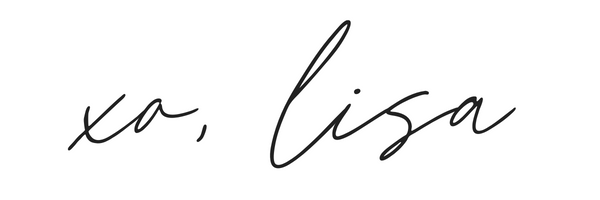
*This ingredient information was referenced from “A Consumer’s Dictionary of Cosmetic Ingredients,” by Ruth Winter, M.S. unless otherwise stated.

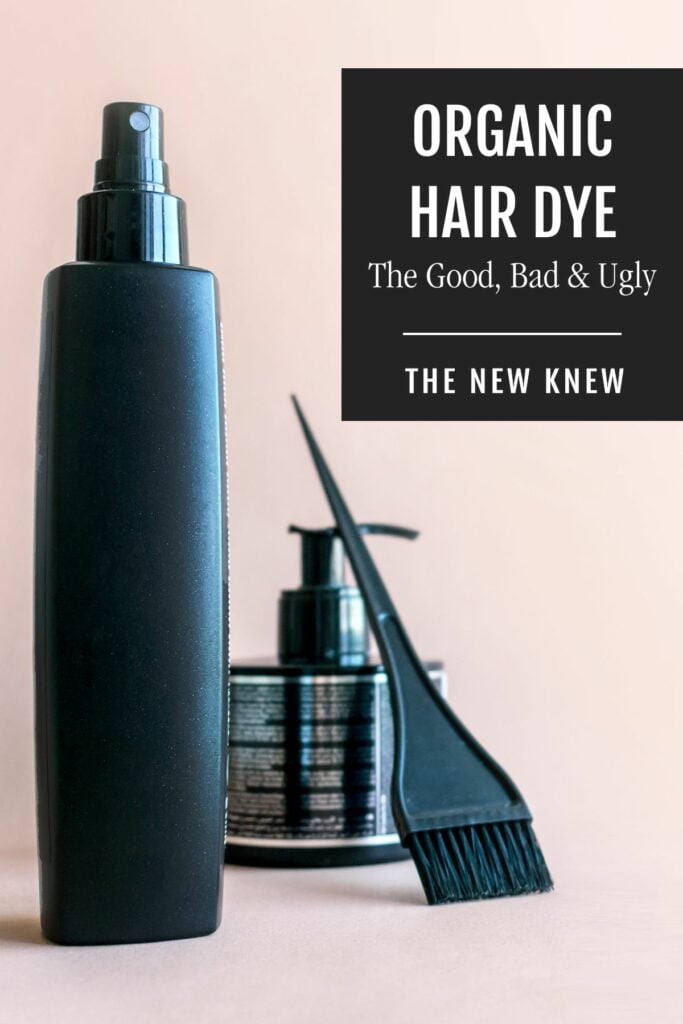
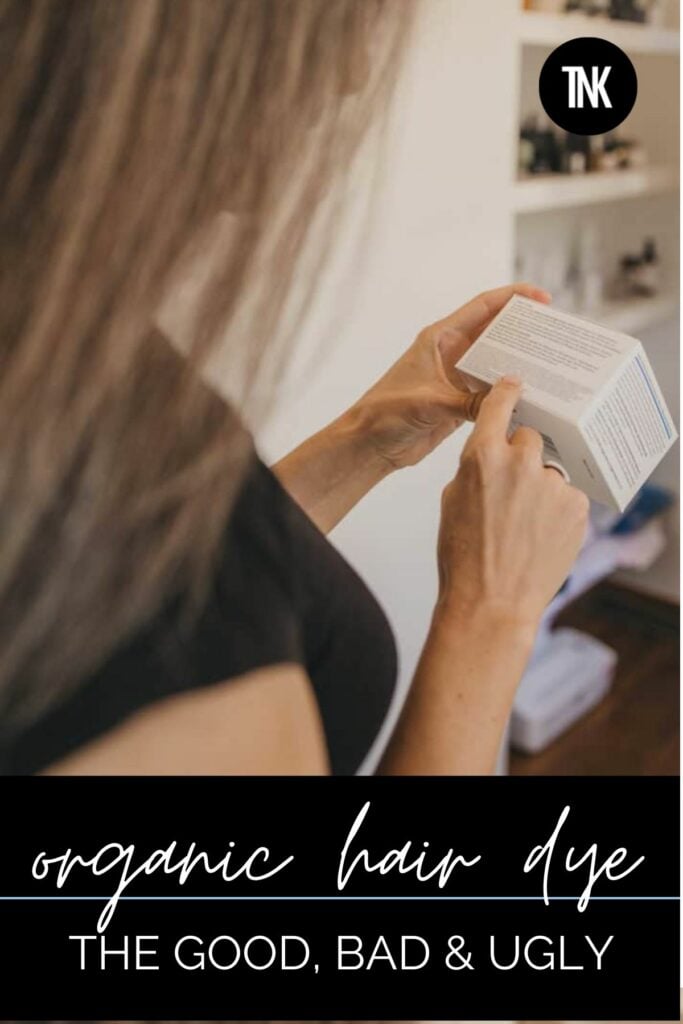
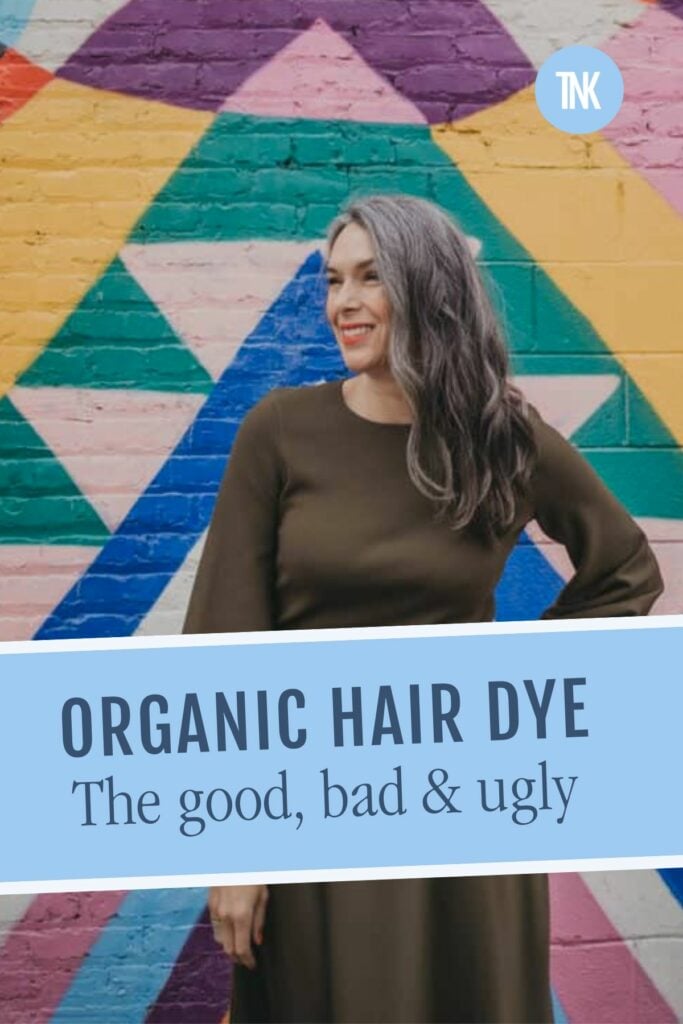
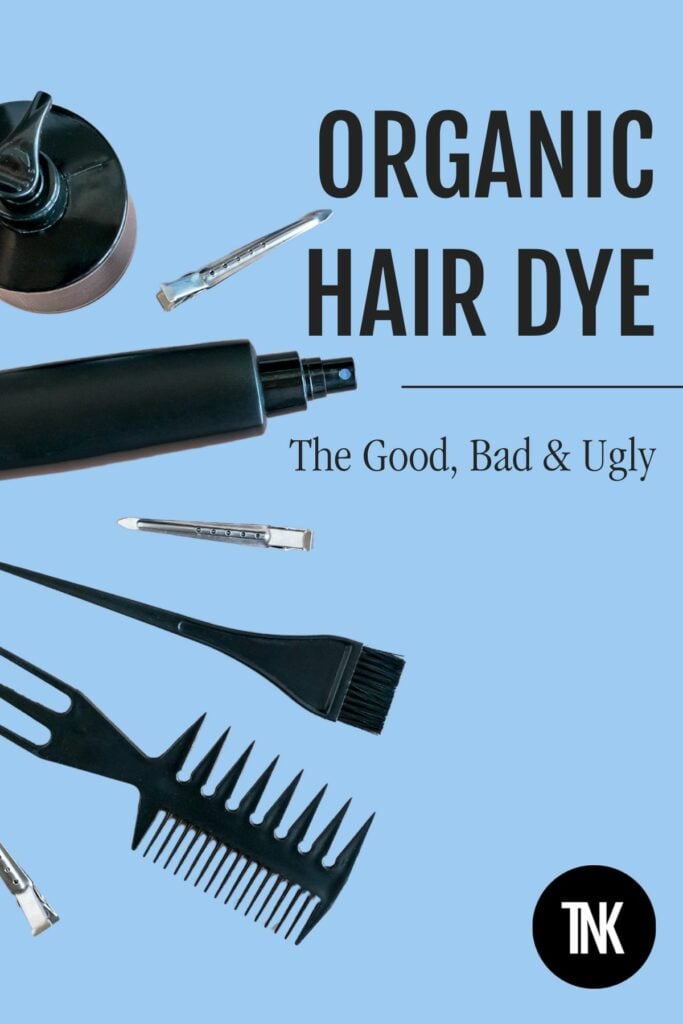
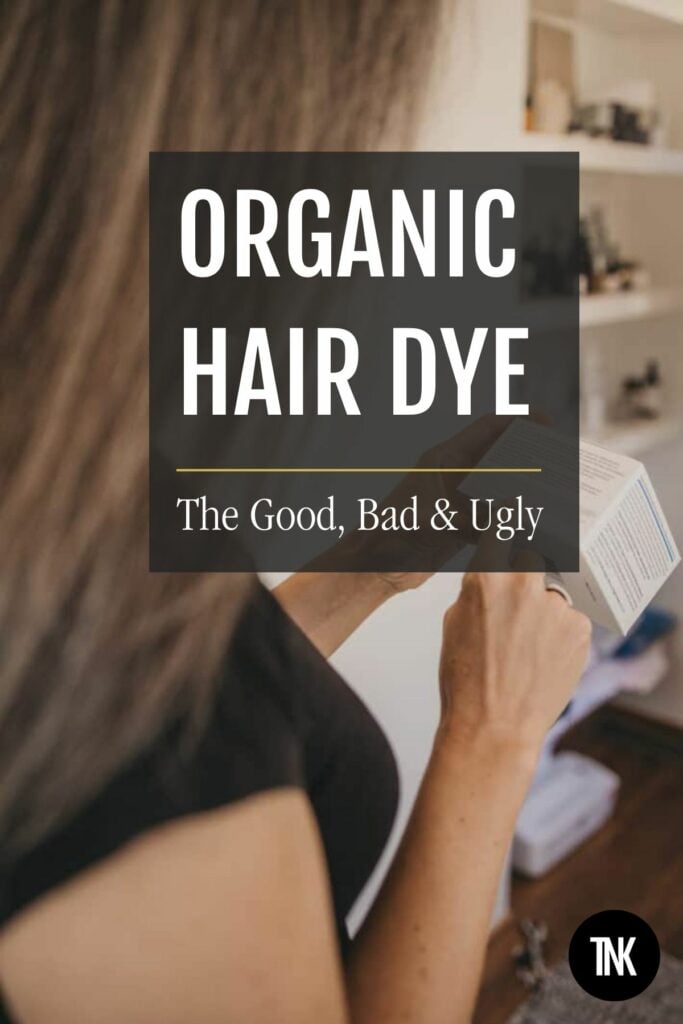
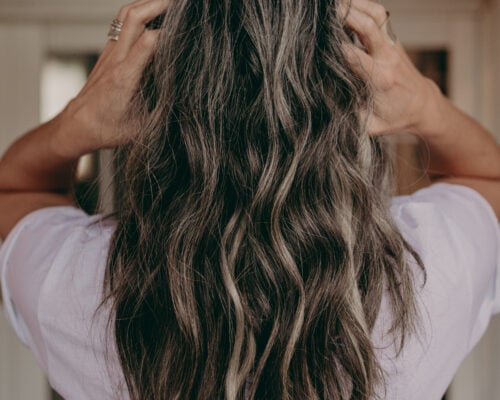

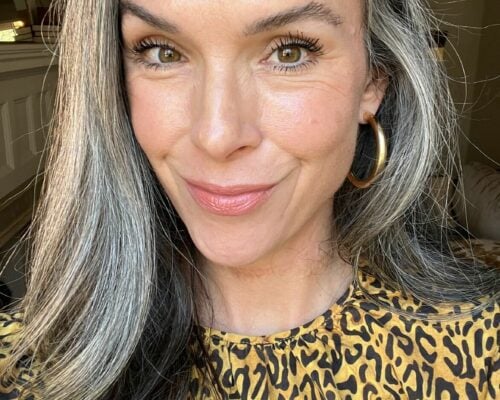
Julie
May 17, 2017So which hair color is best to use. I have been using Aveda.
Lisa Fennessy
May 18, 2017Hi Julie! I don’t really have an answer for that. I’ve been using Hairprint and it has been working for me. You can search my blog for before/afters. All the photos are real and unedited. It’s just limited in what it can do so it’s not a one-size-fits-all solution. But my main point for writing this piece was just to make people aware that if hair dye is working then it is employing this finite list of toxic chemicals. I don’t like seeing hair dyes labeled “organic” because their not even close to it. I just want people to be aware of the choice they are making. Enough with the phony labeling and deceptive marketing.
Sylvia Colon
July 2, 2017I totally love all your true reviews about how unhealthy organic haircolor is. Also disappointed because i am not ready to let my hair be gray. Also i tried to get in touch with “hairprint” about 3 or 4 times, and left a message, with no response. So that is a little upsetting.
Lisa Fennessy
July 2, 2017Bummer! I would be annoyed too. You could try and contact them through social? Like Facebook or Instagram? They are pretty responsive there!
Forever Flawless
July 6, 2017Nice information …
Michael Kardacz
July 8, 2017Your hair begins to lose its natural colour which leads to Premature Gray Hair. Premature Gray Hair Herbal Treatment can reduce or prevent the premature onset of gray hairs, improving how your hair looks as well as its overall health.
Sherryl
July 10, 2017Thanks for a great blog on this intense subject matter. My stylist just used DIVINES color on my hair touting No Ammonia or bleach. I didn’t ask to see the box to check ingredients this time. I looked them up online & they showed paraben, but not the other ingredients you mentioned. I will be checking on the bid of ingredients next month! Thanks for the info!!
Lisa Fennessy
July 10, 2017Yes! Checking the box or emailing the company is sometimes the only way to go! Love your dedication! : )
TT
June 12, 2020I read this article and your Hairprint review. I wish I didn’t see your take on henna as dismissive since it’s as messy and time consuming to apply as Hairprint. There are costs to natural and safe products, that includes time consumption, messy application and varying results as a result of individual experiences. It’s however beneficial to hair health, and they colour and conditions the hair at the same time. Now, compare Hairprint and Henna: Truly organic? Accessibility to consumers? Ease of application? After-application result? (Please check out Radico Organic Hair Colour. I tried and found out that it works really well. Making the paste with brewed coffee results in darker colour if you get orangeish tint after 1st or 2nd application with just water. Other reviewers suggest adding egg yolk, even cognac to achieve desired results. But one must be ready, as you said about homemade food and quick fast food, to experiment, read lots of reviews. Henna and Indigo are cheaper, if natural ingredients and results are our concern. I believe there are other Henna and Indigo plant based hair dyes brands out there but I have personal experience with Radico Organic Hair Colour).
You’re an expert product researcher and label reader, so I’d be glad if you’ll take a deeper look at Henna and Indigo powder as a natural hair colour option and Radico Organic specifically for its authenticity.
I learned a lot reading your articles. Keep it going.
Lisa
June 13, 2020Hi TT! Thanks so much for this! I love that you found a clean option that is working for you! I’m sure others will appreciate reading about your experience as well. xo, Lisa
Trisha Fox
July 4, 2020Matrix’s Biolage line has put out a more mainstream henna product (2019) called Biolage hair color- I have been searching for a long time but have not been able to find a matrix salon that uses it anywhere near me. I have contacted Matrix too for help but they told me to just keep contacting salons on their salon finder page. Maybe someone else will have better luck.
Jas
October 23, 2020Hello!
this blog is so informative and I thank you so much for it.
I am UK based and tried Hairprint, it was such a palaver and took a minimum of 3hrs all in but it didn’t cover my greys and then , led to an allergic reaction which I couldn’t be bothered to pin down as frankly it was all so expensive to get shipped to the UK and then the time and then the allergy that I gave up!
I had been using henna and indigo for years, both 1 step and 2 step method and it was great, it even reduced the thickness of the grey hairs to blend into the others which I really appreciated,. I was doing this every 3-4 weeks but over the course of 3 yrs, I got a cumulative allergy to indigo! which meant that my face, ears and neck bones itched and I was itching at work as id speak to colleagues and didn’t even notice!
So the lockdown meant that I didn’t need to see anyone and I went grey and undyed for 3-5 months, and then I opted for Loreal Botanae, and believe me my confident went up in spades, I felt I could walk around and strut my stuff like once before. but again as this was a combo of henna and indigo I started to itch again.
My mother is an engineer and she recommended that I smother my itchy zones with Vaseline every time I washed my hair over the bath, so the run down water wouldn’t cause an itch. and that has helped!
so basically atm Im lubing up everything that comes in touch with run off water with Vaseline.
but the quest goes on!
Lisa
October 25, 2020Hi Jas! Thanks so much for your feedback. Keep us posted if you find something you like! xo, Lisa
Jas
October 26, 2020Hello!
so currently I’m looking at Goldwell Elumen, this is the ingredient list.
So far seems clean to me. but as I say, for the camouflage ability of indigo with henna, I will carry down that path, until I need a perm synthetic dye.
NN@8 (Art.-No. 210886EN):
Ingredients: Water / Aqua / Eau, Propylene Carbonate, Alcohol Denat., Lactic Acid, PEG-9 Dimethicone, Xanthan Gum, Sodium Hydroxide, Fragrance / Parfum, Acid Yellow 3, Acid Orange 7, Acid Violet 43, Acid Red 33, Acid Black 1.
NN@6 (Art.-No. 210885EN):
Ingredients: Water / Aqua / Eau, Propylene
Carbonate, Alcohol Denat., Lactic Acid, PEG-9 Dimethicone, Xanthan Gum, Sodium Hydroxide, Fragrance / Parfum, Acid Orange 7, Acid Violet 43, Acid Yellow 3, Acid Red 33, Acid Black 1.
Jas
October 27, 2020Right, so forget Goldwell, they were very sketchy when I called up asking for an explanation of how their technology dyes hair.
what I have realised that Scandi countries, do at least try to be cleaner or have a desire to be at the very least.
I came across Naturalique, which says the following about their colour, and as far as I know contain 0.46% of PPD , which is what Ive been so far told by a salon:
‘We are very sorry to disappoint, but there is simply no such thing. In our experience and humble opinion, there are two factors making it impossible to create 100% organic hair colour: Permanent colouring and grey coverage. For permanent results, the colour must contain a pH adjuster to open the hair cuticle. In conventional hair colours, this purpose is fulfilled by ammonia. Unfortunately, many hairdressers suffer from severe health conditions such as headaches, chronic coughs and rashes as a consequence of working with ammonia colours.
At NATULIQUE, we chose to replace ammonia with the more gentle pH adjuster Monoethanolamine (MEA).
The second, non-organic ingredient, needed to create permanent results and grey coverage is PPD (P-Phenylenediamine) or its sister compound PTD (Toulene-2.5-Diamine). If your client is not allergic, PPD and PTD in small amounts are however not harmful. Consequently, if you want to achieve permanent results and grey coverage, you have to say goodbye to the idea of 100% organic hair colour.
‘
Jas
October 27, 2020Hello, I’m back again.
Now looking at Phyto Colour, Ive read some medical journals and my biggest fear is getting the type of extreme dermatitis that my mother ended up with all over her body after using PPD for about 25 yrs in her hair dye.
Reading about HPPS and how the majority of those that develop allergies to PPD , will not get a positive test with HPPS.
Phyto colour is one such dye that uses HPPS.
Onwards and upwards!
Jas
Jas
October 28, 2020So the Danish have salons called ‘Green Salons’ which go through stringent checks to ensure they don’t use Extreme or Strong Oxidisers like PTD. PPD, Res’ and having called up a couple of salons to ask what colours theyre using, which last well for them, they mentioned
‘Goldwell Elumen’
and ‘Ingredicolor’
The URL attached gives some more info;
https://eng.groensalon.com/products-and-chemicals-2/frequently-asked-questions/
I hope this helps.
Kelly
October 28, 2020Hello! Any updates on good color solutions? I’m allergic to ppd and henna. I’m
hesitant to try hairprints. I had a mild sensitivity I believe to something in original and mineral organic color. Please advise, thank you!
Lisa
November 16, 2020Hi Kelly! There is nothing “clean” except henna and Hairprint. But if I were still dying my hair I would go with OWAY most likely.
Jas
November 2, 2020Good morning,
So I went for a patch test for Elumen, nn@6 which is one of the 2 grey coverage colours that Goldwell have.
and what I learned from my experience was that Elumen is a patented formula, that relies on the positive ions attracting negative ions from hair dye to hair, to pick up the colour without the use of Oxidising agents and ammonia.
If we look at the number of chemicals that Green Salons have banned we see that its pretty exhaustive.
The ingredient list I provided above, is it. and remarkably, I wasn’t allergic to Elumen, its a demi permanent dye that will last about 20+ washes, and it suffices for my purpose, and Im absolutely chuffed as I wasn’t ready at all to embrace my greys but nor was I willing to use PDD, PTD, Res’, Ammonia and all the derivatives to dye my hair.
So win win.
I will use the colour in 2 weeks time as I need the indigo to leave my hair and the itching to stop!
thank you all and I do hope it helps you all.
Jas
November 30, 2020Hello, I just thought id update you about Elumen, it worked wonderfully on second trial. I wanted a very dark brown shade with no orange/red tones and it took a couple of gos at least and I settled on a 50% composition of an5 and nn6 to guarantee the 100% grey coverage, I also added some Elumen thickener to build up the consistency of it , so it got easily grab the small hairs at the front of the face. and once applied for 1hour with a plastic cap on top and washing out, viola, deep dark brown. There is some scalp staining and that does annoy me which comes out after 4 washes altogether but I will be more careful next time. Having run the ingredients through EWG, they all have very low ratings of 1/2 or maybe 3.And all I cant say is that I’m so relieved to have found something doesn’t itch and that work! Good luck
Mickie
December 26, 2020Hi, what do you recommend for lightening hair gently like 2 shades. Is there anything safe
Lisa
December 31, 2020Hi there! I haven’t come across anything but if you find something, let me know! xo, Lisa
tina
February 24, 2021Hi!!So interesting article..Just wondering.. Solutions like balayage so the hair dye won’t touch the scalp with a hair dye like oway or aveda isn’t a good option?
Lisa
February 27, 2021Hi Tina! I personally thing balayage is a great option just for that reason. And as far as brands that say they are better like OWAY or Aveda….it really comes down to percentages at this point – and determining which brand is using the least amonut of actives mentioned above while still maintaining results. Unfortunately this is not a question that most brands will answer because it’s considered proprietary which is understandable in some ways because if they put their less-toxic formula on front street then other brands can use the same formula. But in this case it would be really beneficial to know as a consumer. My hairdresser says OWAY formulates with the smallest percentages but I didn’t see any hard numbers on that. That is also the brand I tend to recommend because I’ve used it and liked the results and there is a good chance it’s better than the rest.
Kim owen
March 28, 2021Thank you for the information kneed to find a organic hair color also
Pauline
April 23, 2021This thread has been so helpful! Crosschecked with “I Read Labels For You” the entire day and it really seems like Henna and Hairprint are our best options right now- besides, of course, altering our mindset towards gray hair. How have we not come up with the perfect product yet in 2021? Lol
Lisa
May 10, 2021It really is mind-blowing that nothing has been invented yet! xo, Lisa
Pauline
April 23, 2021Also, should anyone need this info, products like OWAY that advertise being ammonia-free most likely replace it with Ethanolamine which could actually be worse.
Lisa
May 10, 2021Thanks for this addition Pauline! xo, Lisa